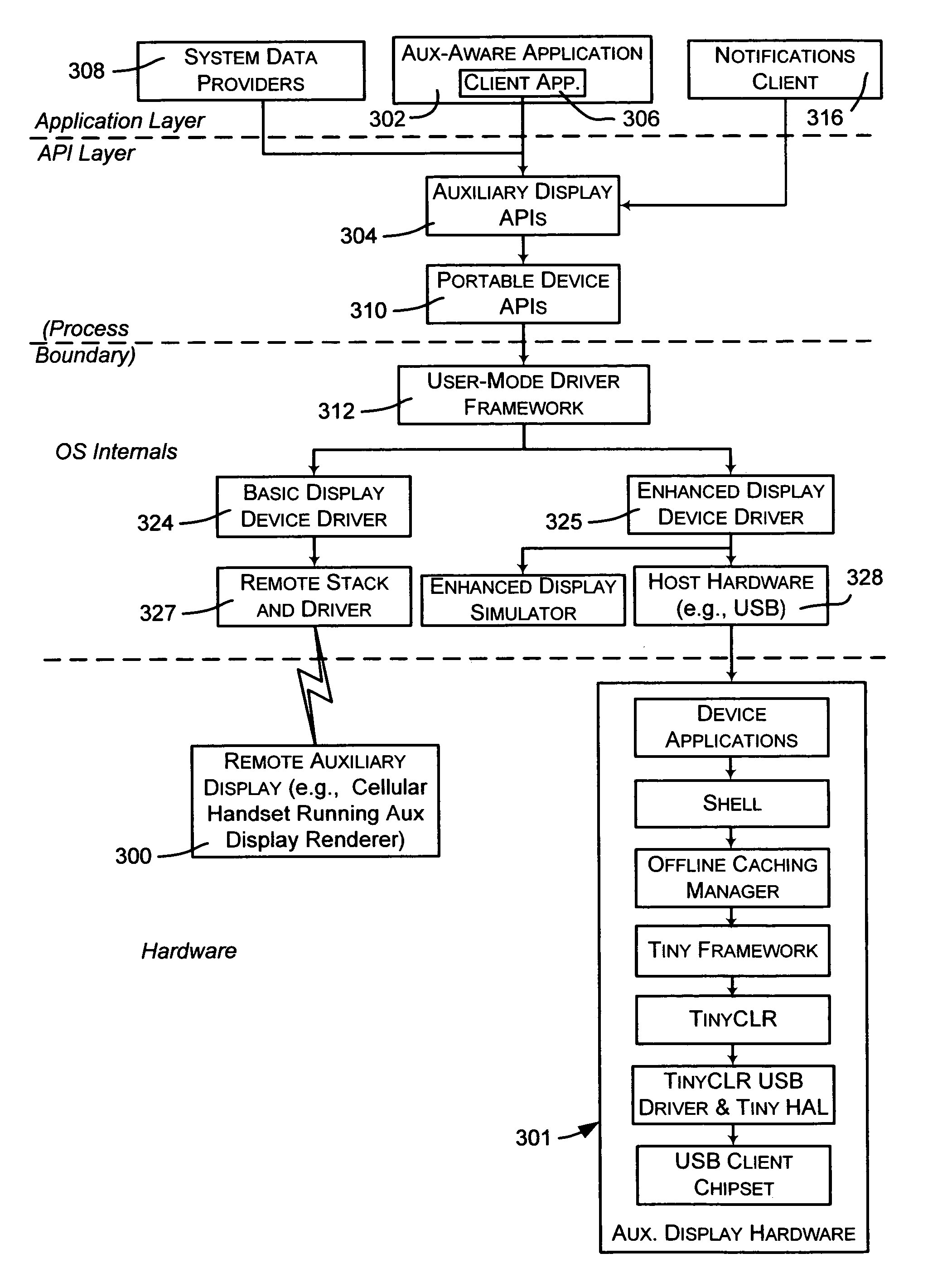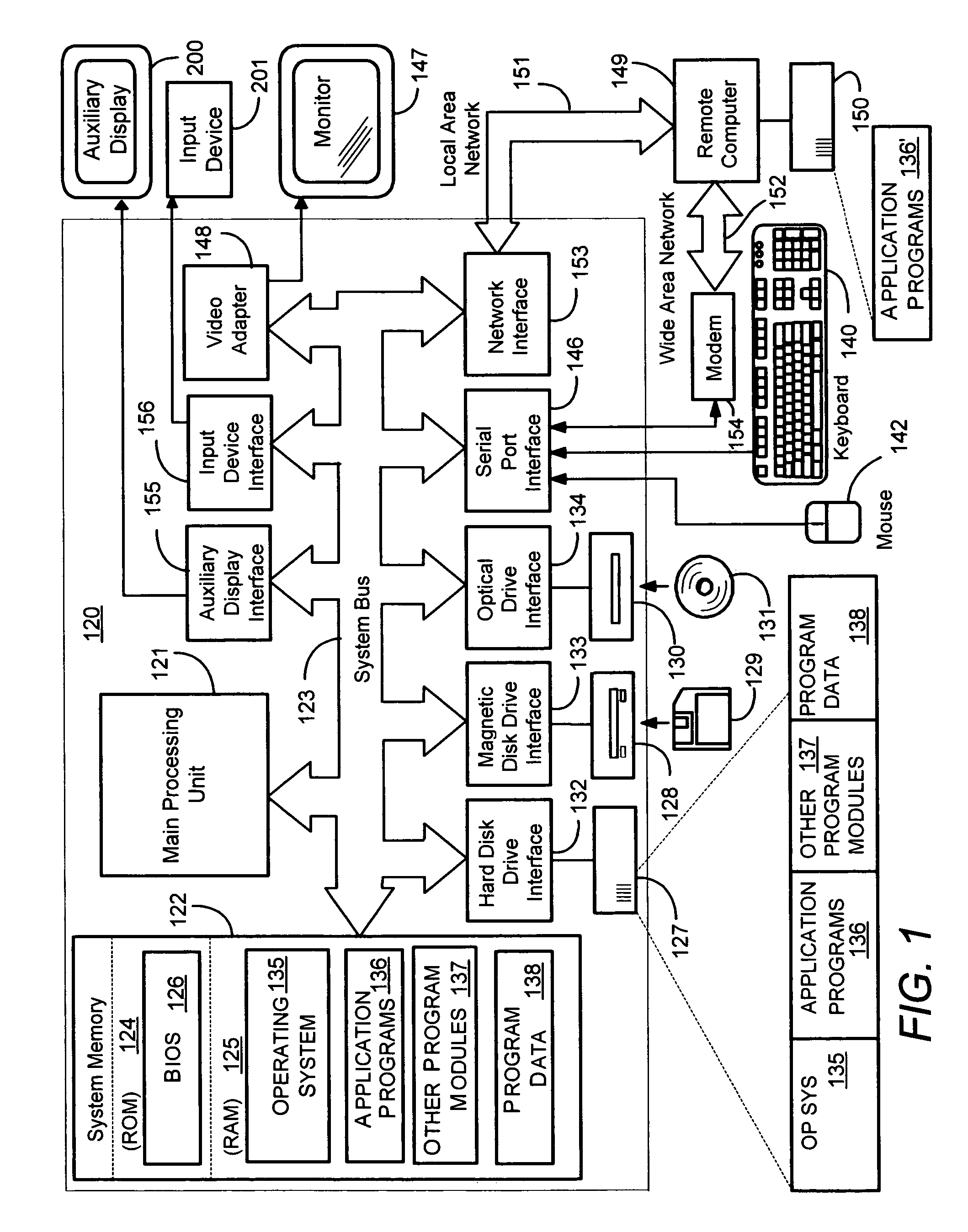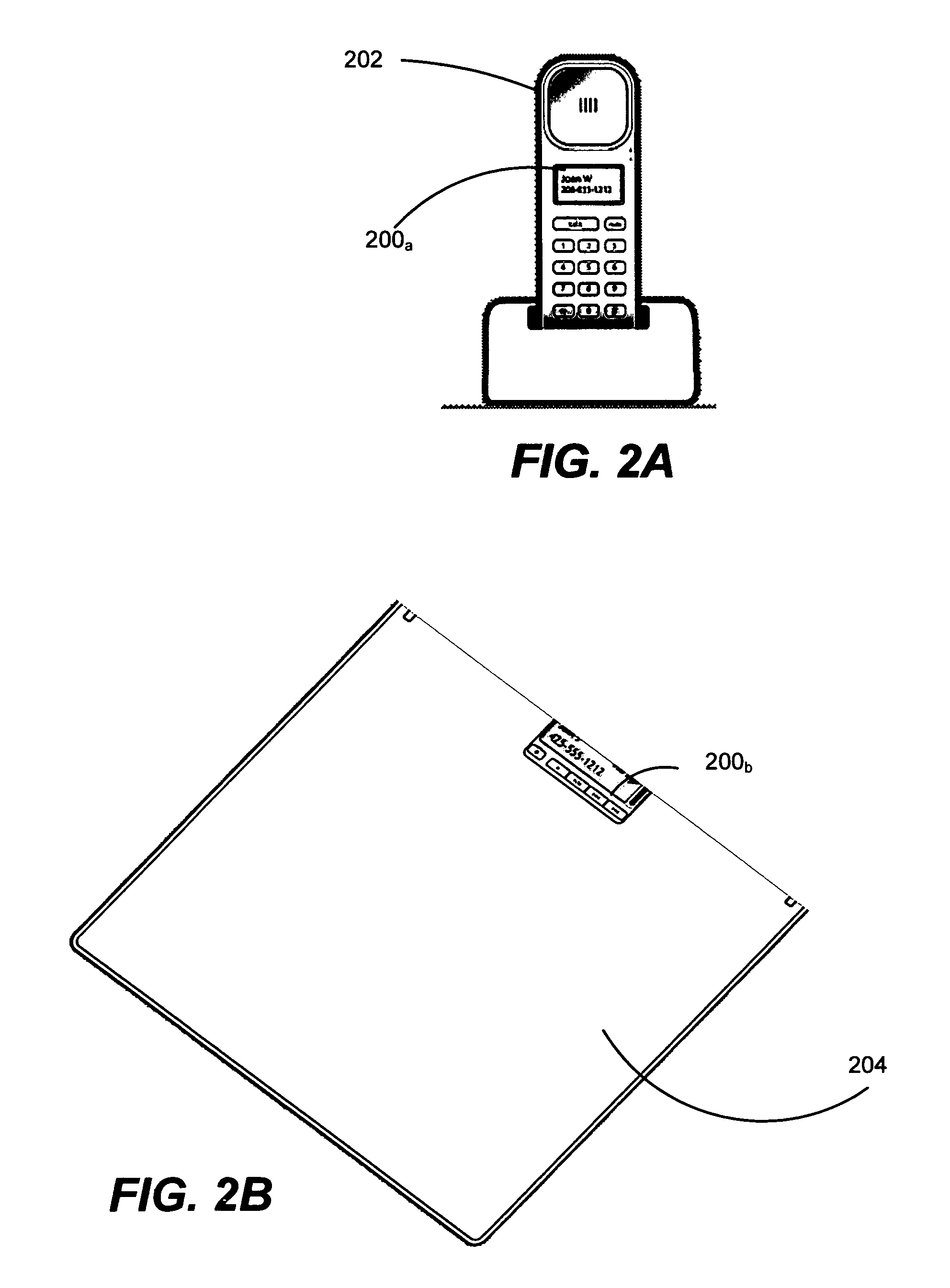Sending notifications to auxiliary displays
a technology of auxiliary displays and notifications, applied in the field of computer systems, can solve the problems of limited use of other devices, and achieve the effect of expanding the ability of the main computer system and facilitating the expansion of its utility
- Summary
- Abstract
- Description
- Claims
- Application Information
AI Technical Summary
Benefits of technology
Problems solved by technology
Method used
Image
Examples
Embodiment Construction
Exemplary Operating Environment
[0020]FIG. 1 is a block diagram representing a computing device 120 in the form of a personal computer system into which the present invention may be incorporated. Those skilled in the art will appreciate that the personal computer system 120 depicted in FIG. 1 is intended to be merely illustrative and that the present invention may be practiced with other computer system configurations, including hand-held devices, multi-processor systems, microprocessor-based or programmable consumer electronics, network PCs, minicomputers, mainframe computers, headless servers and the like. The invention may also be practiced in distributed computing environments where tasks are performed by remote processing devices that are linked through a communications network. In a distributed computing environment, program modules may be located in both local and remote memory storage devices.
[0021]The personal computer system 120 included a processing unit 121, a system memo...
PUM
 Login to View More
Login to View More Abstract
Description
Claims
Application Information
 Login to View More
Login to View More - R&D
- Intellectual Property
- Life Sciences
- Materials
- Tech Scout
- Unparalleled Data Quality
- Higher Quality Content
- 60% Fewer Hallucinations
Browse by: Latest US Patents, China's latest patents, Technical Efficacy Thesaurus, Application Domain, Technology Topic, Popular Technical Reports.
© 2025 PatSnap. All rights reserved.Legal|Privacy policy|Modern Slavery Act Transparency Statement|Sitemap|About US| Contact US: help@patsnap.com



